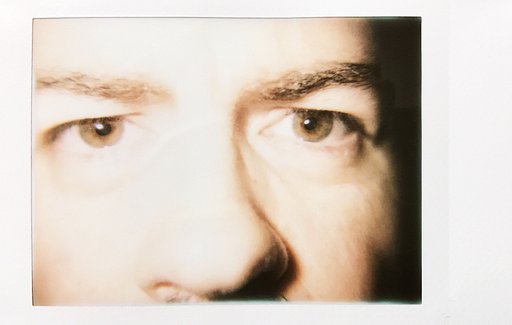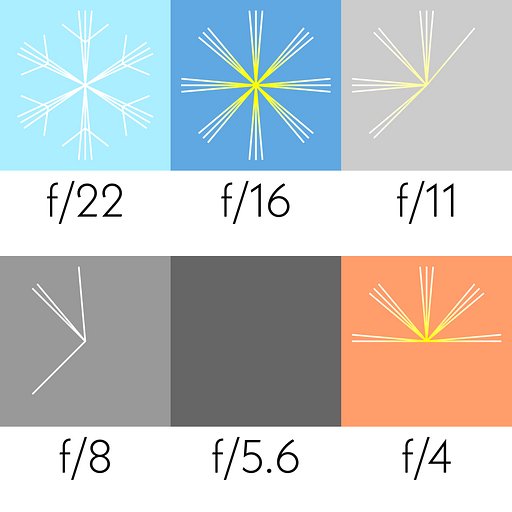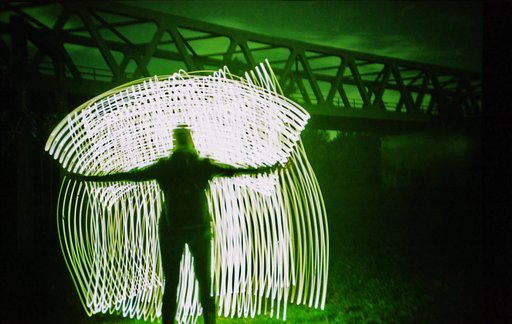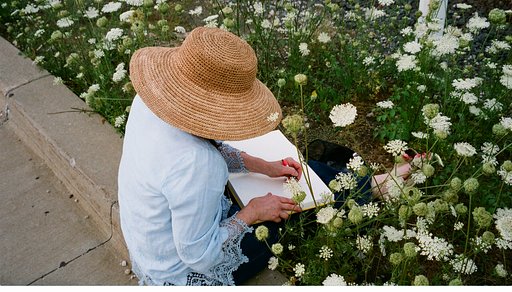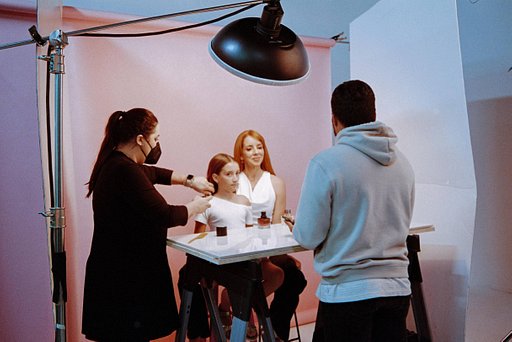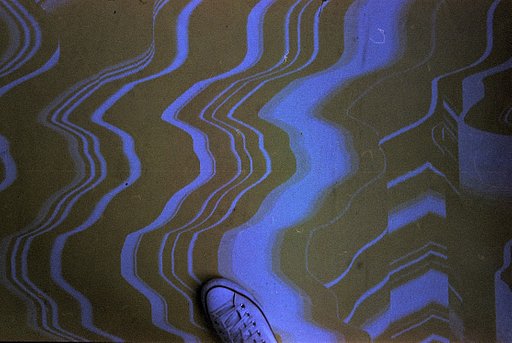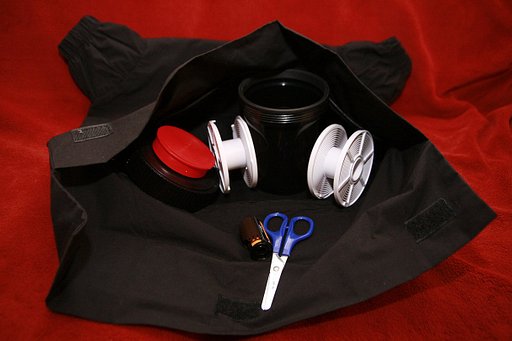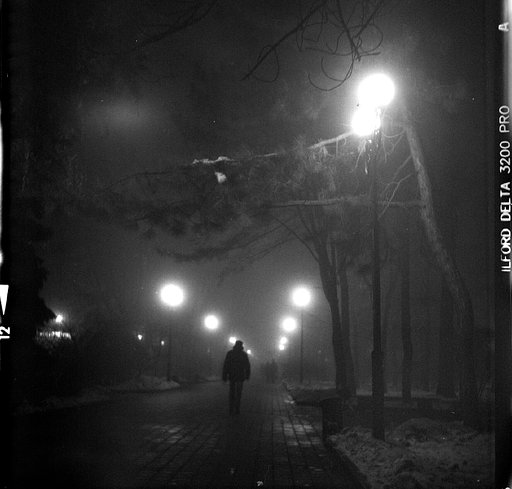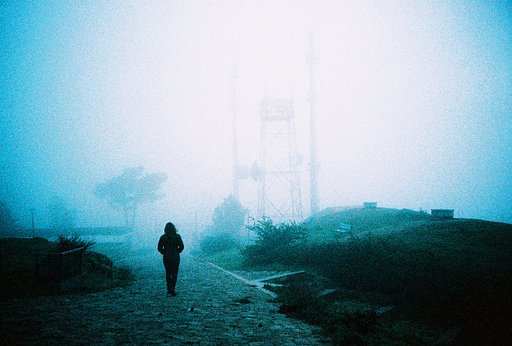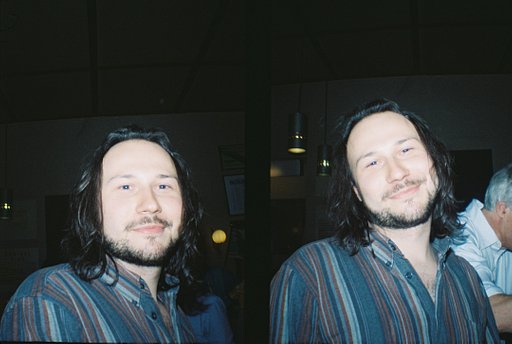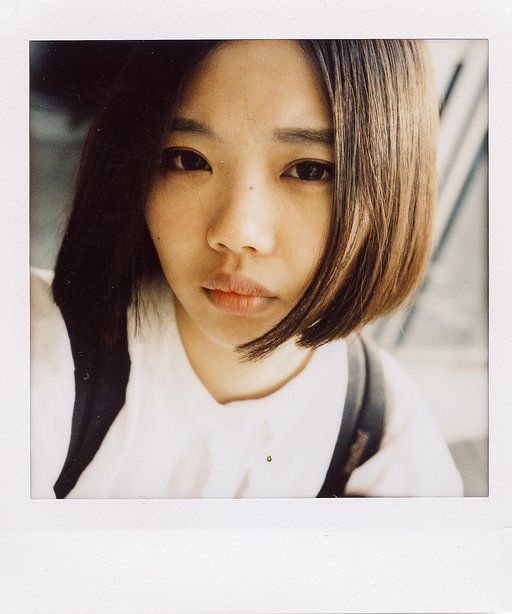Lomo School – The School for Analogue Photography
Forget about stuffy classrooms with chewing gum on the seats, welcome to the most exciting school you’ve ever been to! Learn everything from the analogue basics to exciting experimental techniques with these photography courses.
Are you keen to become an expert in all things analogue? Whether you’ve never seen a film camera before or if you’re an experienced photographer – this is a space where everyone can get involved. Find detailed guides to the analogue basics as well as tips and tricks for recreating Lomography’s signature experimental techniques. An ever-growing curriculum, we’re answering the most frequently asked questions from our Community and welcome any more at school@lomography.com.
Featured
Most Popular Courses
Our Curriculum
- Shooting low ISO
- Expired film
- 110 Pocket Film Format
- Film photography in low light
- Lens filters
- All about street photography
- How photographic film is made
- Introduction to photography history
- Light painting and long exposures
- Flash photography
- Instant photography
- Film camera maintenance
- What is Lomography?
- All about film soup
- Introduction to film types
- Motion Picture & Cine film
- Alternative Analogue Processes
- Self-developing film
- Multiple exposures
- Pinhole photography
- All about studio photography
- Darkroom techniques
- Analogue photography basics
- Film scanning
-
How do I clean my instant camera rollers?
Gently wipe the rollers with a soft cloth, tissue paper or cotton swab saturated with alcohol or ionized water. Once done with that area, press the shutter to make the rollers move, then so the same on the newly accessible parts. Repeat the process until there are is no visible dirt or black streaks left.
-
How do I creatively alter my instant photos?
Revamp your old instants or experiment with your fresh ones by trying out these five alteration ideas.
-
How do I create a transparency with instant photos?
Create transparencies from your Instax photos to elevate their uniqueness! Just follow these five easy steps.
-
Can I change a 110 film cartridge while shooting?
Yes, 110 is the only film format that allows you to easily and safely change the cartridge mid-roll!
-
Where can I get 110 film developed?
Contact your local labs to find out if they develop 110 film, or send it to us at our LomoLab.
-
What type of film camera is best for street photography?
Any film camera can be used for street photography and can give you excellent results. However the most popular are automatic point-and-shoots cameras.
-
How do I start street photography?
All you need is a film camera loaded with your film of choice, a suitable place to photograph, and some free time to do so. If you’re still unsure of where to begin, here are a few additional tips:
-
What are some easy alternative analogue processes for beginners?
Some of the easiest, most common and beginner-friendly alternative analogue processes to try out are lumen printing, chemigrams, and cyanotypes.
-
What is a chemigram?
A chemigram is a camera-less printing technique that produces an image using chemicals and light-sensitive paper.
-
What is a cyanotype?
Cyanotype is an alternative analogue process that produces a distinct cyan print. It is one of the most accessible and fun types of alternative image-making techniques to try out at home.
-
Can you soup black and white film?
Yes, black and white film can be souped. As with color negative and slide film, Black and White films have layers that can be manipulated through the use of chemicals and various substances to produce weird and wonderful images.
-
How to make a darkroom at home?
When setting up a darkroom, it is crucial to find an adequate space and purchase a good enlarger. Every other tool can be easily found online.
-
What is the maximum distance to be from my subject when using a flash?
For most basic camera flashes a maximum of three meters should allow you to still get a good exposure.
-
What is the minimum distance to be from my subject when using a flash?
For most basic camera flashes a minimum distance of one meter, or approximately your arm’s length, should be enough to get a good exposure.
-
How to use a flash creatively?
Besides using a flash to brighten up dark scenes, you can also use it in more creative ways by trying it in day time, changing the direction of the light, using slower shutter speeds, or even adding color with the colorsplashing technique.
-
What is a test strip?
A test strip is a piece of paper with which the correct exposure time for an image can be determined by dividing it into sections of different exposures.
-
How do I know if my film camera is in good condition?
Whether you’re buying secondhand film cameras or inheriting old cameras from family or friends, you can conduct a quick check to find out if they are working and in good condition.
-
What is a contact sheet?
A contact sheet is a printed photographic paper that includes on a single page all the photos taken on the roll.
-
Who first invented photography?
It was Joseph Nicéphore Niépce who successfully captured the first photographic image using the Camera Obscura, by taking a view from the window of his house.
-
What are the best ingredients for film soup?
There are no strict rules when it comes to creating a film soup recipe. However, there are key liquid ingredients that most experienced film soup enthusiasts gravitate towards. Think of water, cola, juice, wine, beer, coffee, contact lens solution, vinegar, soy sauce, to name a few.
-
Should you do film soup before or after shooting?
Film soup can be done either before and after shooting a roll of film. Allowing drying time for the film is necessary in both cases.
-
Is it cheaper to develop my own film at home?
Yes, if you shoot a lot of film it can often be cheaper to develop it yourself at home.
-
What are some tips for shooting film in low light?
From using film stocks with higher ISO, using prime lens, tripod and lightmeter, here are a few tips for shooting in low light situations such as overcast days, night shoots and indoor set ups.
-
For how long is expired film still ok to use?
There’s no hard rule about how long a film will still be usable for past its expiry date. It all depends how the film has been stored before you shoot it. Film that has been kept in high temperatures, sunlight, or humidity will have degraded much faster than film that has been kept in cool, dark and dry conditions.
-
Should you push film in low light?
Pushing the film in low light conditions depends on a few variables including how dark the environment is, and if you think it will be necessary to let in more light to achieve the image you’re going for.
-
How should film be stored?
Photographic film should be stored in a cool, dry and dark place. Keeping film in these conditions is the best way to slow down its gradual degradation.
-
What are the different types of film cameras?
From a SLR, to TLR, to rangefinder or point & shoot cameras – find out how these different types of cameras operate.
-
How to make my own pinhole camera
There are many ways to make pinhole cameras, from cardboard boxes to beer cans! Here’s a quick and basic guide for you.
-
What is the sunny16 rule?
The Sunny 16 Rule is a way to meter for correct exposure during daylight without using the camera’s meter. It is great for photographers who don’t want to get slowed down by metering for every shot or rely too much on their camera’s in-built light meter.
-
How long should I expose the frame for pinhole photography?
The answer, simply, is that it depends on many factors, including the image you want to create, the type of light-sensitive material you will be using, and the amount of light. Because of the small size of pinhole cameras' opening, these cameras take in less light so exposure usually takes longer.
-
What is light painting?
Light Painting (sometimes known as Light Graffiti) is a technique where you can alter the photo by creating movements of light within the image.
-
How to scan my film negatives at home
Depending on the method you’re going for, you will be needing some of the following to scan your film negatives: digital camera with macro lens or your smartphone, a tripod, a scanning mask or film holder, a flatbed scanner or dedicated film scanner, a light table/LED panel or scanning kits.
-
What is a Lomographic picture?
A Lomographic picture usually mixes the golden rules of Lomography and a few of the defining characteristic styles. However, nowadays a Lomographic picture is entirely up to your own creativity.
-
What does it mean to overexpose vs underexpose a photo?
Put simply, an overexposed image is one that is brighter than the reality of the scene you’re trying to photograph, while an underexposed image is darker than reality. Overexposure generally means you are giving your film too much light, and with underexposure you have the opposite problem of not enough light.
-
What are the best techniques for taking multiple exposure photos?
Multiple exposures are one of the best ways to push your creativity with film photography. Here are a few techniques to help you take your photos to the next level.
-
What are the different photographic film formats?
The three main types of film format are 35 mm, medium format and large format. More unusual formats also exist such as 110 and 127.
-
Why use film for studio photography?
Analogue photography is not only for use outdoors! A wide variety of photographic genres such as editorials, fashion shoots, still life, and so on, can be created on film in a studio.
-
What is tungsten film?
Most standard films are daylight-balanced, so they tend to capture the yellow-orange cast from tungsten lights. To address this, tungsten film was created to produce color-correct images taken under artificial lighting.
-
What is EBS?
EBS is short for Expose Both Sides, which is a technique in analogue photography wherein you do just that. You first load and shoot your film like you normally would. Once finished, remove and reload the film, but this time with the opposite side of the emulsion facing towards the lens. The EBS technique produces redscale-like, otherworldly double exposures.
-
Why is there a wider image beneath my 110 film border?
With 110 film it’s normal to see a transparent film border and a wider image visible beneath. This is because 110 film is pre-exposed in order to make printing easier.
-
What is a LomoWall?
A LomoWall is a vibrant and colorful artwork that utilizes analogue photography to celebrate the talent and diversity of countries, cultures and people. This record-breaking and collaborative practice has always been an important part of our story.
-
What is 126 film?
126 film was launched by Kodak in 1963 as a way to simplify the process of loading and unloading film into cameras. Its name comes from the negatives’ dimension of 26.5 mm square. Although companies ceased mass production of 126 format around 2007 to 2008, its cartridge is still known and loved today.
-
What is APS film?
Advanced Photo System or APS film was introduced in 1996 as a “high-tech” or modern alternative to the 126 and 110 film formats. It was 24 mm wide and it introduced many innovations, like the ability to choose exposure lengths and print sizes. Production of new APS film was ceased in 2011.
-
What is parallax error and how can I avoid it?
Parallax error, also known as a viewfinder error, is the shift in the apparent position of your subject due to the difference between what your lens sees and what your viewfinder shows. This can affect a photograph’s composition, framing and depth, but there are easy steps we can take to minimise it from happening.
-
What does exposure compensation mean?
Exposure compensation is a feature that allows you to override the camera’s light meter reading by allowing the photographer to control how dark or how bright a photo will turn out before snapping a photo.
-
How can I set up my own mini photography studio at home?
If you’re looking to create a home photography studio on a budget here are a few basic elements you will need.
-
What equipment do I need for studio photography?
For a professional studio set up there are several essential pieces of equipment you will need, including paper backdrops, a camera flash, a soft box, reflectors, a tripod and props.
-
What does “pre-flashing” mean?
Pre-flashing is done to the whole paper to accelerate the density, without compromising the white. It is used when there is a negative with dense highlights.
-
How do I make an instant film emulsion lift?
Experiment by doing emulsion lifts on your Polaroid prints! Here are the materials that you need and the five easy steps to follow.
-
What are the advantages of shooting 110 film?
There are a few advantages to shooting 110 film, including convenience, ease of use and of course that beautiful grain!
-
How do I load 110 film into my camera?
To load a 110 film into your camera, simply open the back cover of the camera, pop the cartridge inside, close the cover, and then wind the film until you reach the first frame.
-
Where can I buy 110 film?
Lomography is currently the only producer of 110 film. Our wide range of 110 film stocks are available at our online store and from various Lomography partners all around the globe.
-
Do I need to rewind my 110 film cartridge at the end of a roll?
You do not need to rewind 110 film after you’ve finished shooting the roll. Simply remove the film cartridge from the camera and you’re good to go!
-
What is cine film?
Cine film refers to analogue motion picture film that is used to capture moving images for television and movies. However cine film can also be used for still images and can be shot using regular analogue cameras.
-
Can you develop ECN-2 film in C-41 chemicals?
Yes, cross-processing ECN-2 film in C-41 chemicals is possible if your cine film has had the remjet layer base removed.
-
What is the difference between ECN-2 and C-41 film?
ECN-2 film is unique in that it can be used for both motion picture and still photography, whereas C-41 film which can only be used for still photography. ECN-2 film has a remjet layer that protects it from light piping, base scratches, static, and halation of highlights in an exposure. Additionally, ECN-2 film is available in both Tungsten and daylight-balanced variations and produces muted colors. C-41 film does not offer these features.
-
What is a remjet layer in film?
The remjet layer is a black layer coating on the back of a roll of cine film that protects it from static electricity buildup within the camera, dirt and scratches, and light halation.
-
What is ECN-2 film?
ECN-2 film refers to any film that uses the ECN-2 development process created by Kodak to develop their color-negative motion picture film stock.
-
What was the first motion picture film?
The first motion picture film was a two-second film called "Roundhay Garden Scene" which was made in 1888 by French inventor Louis Le Prince.
-
What are the advantages and disadvantages of shooting in a studio?
With studio photography you have much more creative control, but it also requires more technical knowledge.
-
What kind of film camera should I use for studio photography?
Any camera with fully manual control can work well for studio photography.
-
What kind of film should I use for studio photography?
Any kind of film can be used in studio photography!
-
How can I get into studio photography?
Start by assisting an experienced photographer to learn the technical aspects of the studio equipment.
-
What is studio photography?
Studio photography takes place in a closed indoor space, giving you full control and consistency of lighting and other variables.
-
What kind of film should I use for street photography?
There are no rules about what kind of film should be used for street photography. However you should consider several factors such as ISO, film format and color.
-
What focal length should I use for street photography?
Many street photographers favor a relatively wide-angle lens, such as those with a 35 mm or 28 mm focal length, in order to capture everything happening in a busy street scene.
-
What is street photography?
Street photography is a genre of photography that records everyday life in public places.
-
What is split grade printing?
Split grade printing refers to the use of more than one filter when printing your photos in a darkroom, in order to properly expose the highlights and shadow areas.
-
How and where to find a darkroom to use if you don’t have space at home?
In many cities you will be able to find darkrooms that you can use. These spaces are often part of a university, college or photography center.
-
What is a lumen print?
Lumen printing harnesses the power of the sun to make images. Place objects on photographic paper and expose it to sunlight to create a simple lumen print.
-
What is the wet-plate collodion process?
This technique got its name from staining a piece of glass with collodion and other chemicals to make it light sensitive. It is then placed in the camera before the photographer proceeds to take a photo and expose the wet plate.
-
What are alternative analogue processes?
Alternative analogue processes refer to non-traditional or non-commercial photographic printing techniques.
-
Can you soup 110 film?
Yes, it is possible. Film soups can be done with all film formats, from instant photographs to 120. However, you would need to take a different approach and work with a 110 film specific developing reel.
-
Can you soup 120 film?
Yes, 120 (Medium format) film can undergo film soup. All film formats – 35 mm, 110, 120, and instant film – can be souped. The best practice for souping 120 film would be to fully utilize the developing tank reel to ensure an evenly distributed film soup result.
-
How long should I soup my film for?
The duration of your film soup is totally up to you. There are no set rules in place for how long you should soup your film for. It all depends on the kind of results you’d like to produce with your images. Feel free to experiment and explore!
-
How to dry my film soup quickly?
Soak, Rinse, and Dry. These four steps are instrumental to executing a successful film soup. Once your film has been rinsed, go to a completely dark space and use a hair dryer (set to moderate intensity) to dry out the film. You should be in total darkness while doing this so as to not run the risk of any light leaks in your image.
-
What are the different types of photographic paper?
Photographic paper is coated with a light sensitive solution to make it possible to create a darkroom print. Different papers are distinguished by categories such as fixed grade, variable contrast, resin coated, and fiber base.
-
What is a PC sync cable for a flash?
A PC sync cable is a versatile cable that enables you to connect any external speedlight flash to a camera.
-
What is the difference between panchromatic and orthochromatic film?
Orthochromatic film is made with blue-sensitive silver halide crystals, while panchromatic film adds other chemicals to increase the film’s sensitivity into the green and red parts of the spectrum.
-
How many layers does a film emulsion have?
There are several layers in a film emulsion and their characteristics vary with each manufacturer.
-
How is the emulsion coating applied to the film?
The coating of a film is a layer of emulsion containing microscopic light-sensitive silver halide crystals.
-
What are Silver halide crystals?
A silver halide is a chemical compound that forms between the element silver and one of the halogens. When the crystals are exposed to light they react and form latent images.
-
When were wetplates invented?
The wet plate photography process was invented during the 1850s by Gustave Le Gray who theorized about the development process, and Frederick Scott Archer who was hands-on in devising the actual steps of how to create an image on a wet plate.
-
How was the first sequential photograph taken?
The Horse In Motion by Eadweard Muybridge is the first known sequential photograph. It was captured in 1878 and used by then Californian governor Leland Stanford to investigate whether a horse’s gallop resulted in all four hooves being in the air at the same time.
-
When was instant photography invented?
The first instant camera was created by Samuel Shlafrock in 1923. However, because it was not commercially successful, Edwin Herbert Land is often credited with being the inventor of instant photography with his camera, the Polaroid Model 95.
-
Who created the first optic lens?
Ancient civilizations polished crystals, mostly quartz, to replicate the optical abilities that can be found when looking at water. The most famous of these experiments was the Nimrud lens which was made by the Assyrians between 750–710 BC.
-
Why does my photo lab refuse to develop my film soup?
Labs may be concerned with the possible malfunction and destruction of their equipment when dealing with film rolls that have been souped.
-
Can I give my film soup to a lab?
Some labs will accept souped film, but this is not always the case. The chemical residue from your film soup could potentially damage lab equipment and other people’s film. For this reason you should always inform the lab of the film soup, and give details of the chemicals and elements used.
-
What is the easiest way to develop color film at home?
It is sometimes said that color film is more difficult to develop at home than black and white film. However, with a bit of practice developing color film is a simple enough process. Here’s how it’s done.
-
How to make a darkroom print
Work in a fully equipped darkroom. Select a negative, put it in an enlarger and focus the frame. Then expose the image for the correct time on the photographic paper. Finally develop, stop, fix, wash and dry.
-
What is an enlarger?
An enlarger is a light projector used to make a print of an image that is larger than the original negative or transparency.
-
How to get a broken film camera repaired?
If your film camera is badly damaged you can send it to a professional camera technician to be repaired. If the issue is relatively simple, you may be able to fix it yourself using online resources as a guide.
-
How to clean your film camera?
It’s recommended to clean your camera regularly whether you use it a lot or not. Here’s a few steps to keep your camera in good working condition.
-
Do I need to get my film camera serviced regularly?
Many film cameras have been around for decades so it’s advised to have them serviced every two or so years to keep them in good condition.
-
How do I keep my film camera in good condition?
Here’s a list of the ways you can keep your camera in good working condition.
-
What is Dodging and Burning?
Dodging and burning are darkroom techniques used to make adjustments to different areas of our prints. Dodging lightens an area, while burning darkens an area.
-
What is an ND filter used for?
Neutral-Density filters, also known as ND filters, are lens accessories used to control the amount of light coming through your camera lens.
-
Why are color filters sometimes used for black and white photography?
In black and white photography color filters have the ability to increase contrast in your image, reduce the amount of light hitting your film, and slightly modify certain aspects of the image to adapt to weather conditions.
-
What are the most common types of lens filters?
UV filters, ND filters, Polarizers, and Color Correcting filters are tools that all serve their own unique purposes and can help to elevate one’s photography practice.
-
Why do photographers use lens filters?
Lens filters mainly serve two purposes: to physically protect your camera’s lens and to give you control over the light entering through it – whether that be through light intensity, colors, shapes, etc.
-
What are the different types of flash in photography?
The two main types of flash are built-in camera flashes and external flashes that attach to the camera via a hot shoe.
-
In what situations should I use a flash?
The most straightforward time to use a flash is when you have a lack of light in a scene, but beyond this you may also want to use a flash in other difficult lighting situations or as a creative choice.
-
How do I attach a flash to my film camera?
Depending on the camera, you can attach a flash with either a hot shoe, a flash bracket, or a side attachment.
-
What is a hot shoe?
A hot shoe is a mount on top of a camera that facilitates the transmission of electronic signals between the camera and its accessory.
-
What is the difference between an in-camera flash and an external flash?
As the names suggest, an in-camera flash is built into the camera itself while an external flash has to be attached. Besides this, portability and creative control are two other factors that differentiate them.
-
Can I still develop expired film?
Yes, in most cases expired film can still be developed normally. Though there may be some visible degradation noticeable in the final images, depending on how many years the film has expired by, as well as the conditions it has been stored in.
-
What are the best conditions for shooting low ISO film?
Since low ISO films are less sensitive to light, the best conditions for shooting them are bright conditions such as outdoors on sunny days.
-
When did photography become popular with ordinary people?
In the 19th century, photography emerged in various styles such as war photography, portraiture, and architectural photography. However, it was only in the early 20th century that photography became more accessible to the general public with formats such as 35 mm (also called 135 film) 105, 110, 120, 126, and 127.
-
When did cameras start using film?
Photographic film was revolutionized by George Eastman, who eliminated the need for wet plates by introducing the concept of paper film in 1885.
-
When was color photography invented?
Color photography was the subject of numerous experiments in the 19th century, and it was officially confirmed that the first colored photograph was produced by James Clerk Maxwell in 1861.
-
What kind of effects will I get with a low ISO film?
Using low ISO film results in less grainy and higher quality images with more detail.
-
Can you shoot low ISO film at night?
Although low ISO film stocks shine in bright conditions, they can still be used at night time with a few caveats and reminders.
-
What are some tips for shooting with low ISO film?
There are many ways you can get a balanced exposure and amazing results with low ISO films. These include shooting in daylight, using a manual camera, using faster and wider lenses, and making smart use of available light sources.
-
How does film work?
A photograph is the final result that occurs when a chemical reaction exists between light and sensitive silver grain compounds.
-
What is photographic film made from?
Film is composed by two main parts, the base and the emulsion. The film base is usually made of cellulose triacetate, acetate, or polyester. The emulsion is the active ingredient that will capture the final image.
-
Can you soup film after development?
Yes, it is possible to do a film soup once your film has been developed. It is not common, however it is a technique that can still be done and produce unique results.
-
Will film soup damage my camera?
Your camera should be fine, provided the film is dry when you shoot with it.
-
What is film soup?
Film Soup is a creative and experimental technique that involves soaking film in various liquids to create unique and unconventional images.
-
How to safely dispose of film developing chemicals
The best way to dispose of your chemicals is to discharge them at your city’s waste collection point.
-
Why is black and white film easier to develop at home than color film?
The steps involved in developing color film are more complicated than with black and white, and temperature control is also a key part of the process.
-
How to develop black and white film at home
Load your film in the dark, prepare your solution at 20℃, pour developer for the desired amount of time, wash, pour the fixer for the desired amount of time, wash with hypo solution, and hang to dry.
-
Can you develop film without a darkroom?
Yes, however the spooling of your film must be performed in the dark.
-
What equipment do I need to develop film at home?
You will need: A changing bag, developing tank, reels, developing solution, fixer, hypo cleaning agent, access to water, clips, timer, thermometer, and measuring cups.
-
What are the best tips for shooting neon lights on film?
From using fast film, exploring multiple exposures and perfecting your camera settings, here are some of the best tips for capturing neon lights on film.
-
What are the best lightmeter apps to use for film photography?
Here are some of the best lightmeter apps for iOS and Android devices to download for film photography.
-
Do I have to load film in my camera in the dark?
There’s no need to load film in the dark but going under the shade or subdued lighting are ideal conditions when loading film.
-
What is the optimal pinhole size?
A pinhole size ranging from somewhere between 0.2 – 1.00 mm should be good for creating your own pinhole camera.
-
Do pinhole cameras need to focus?
Pinhole cameras do not need to focus. Their tiny aperture means the camera has a nearly infinite depth of field.
-
What is the difference between a pinhole camera and a camera obscura?
A pinhole camera is a type of camera obscura that follows its namesake and uses a tiny pinhole as its lens.
-
Do I need to overexpose expired film?
Yes, when shooting expired film it’s a good idea to overexpose. This is because as film ages and the emulsion degrades, it loses sensitivity, meaning that it needs more light to expose the image correctly.
-
Will expired film damage my camera?
No, using expired film in your camera will not cause any damage to the camera itself.
-
How to develop expired film?
Most of the time you can develop expired film normally, the same as you would with any regular roll of film. No special adjustments need to be made.
-
What do photos taken with expired film look like?
Photos taken with expired film are often characterised by prominent grain, low contrast and noticeable color shifts.
-
What are some tips for shooting expired film?
Shooting with expired film will always be unpredictable, since there is no way to know exactly how much the film has degraded over time and therefore what the end results will look like. However there are a few steps you can take to maximize your chances of getting decent photos from expired film.
-
What is the difference between a full-frame and half-frame camera?
Full-frame film cameras create an image across the entire 36 mm by 24 mm frame. Whereas half-frame cameras can fit two images onto one frame and each image measures 18 mm by 24 mm.
-
How many photos can you take on a 35 mm film?
A standard roll of 35 mm film allows you to take 36 photos. However certain film stocks only allow 24 photos to be taken. The number of exposures is indicated on the outside of the box of film.
-
What is the best type of 35 mm film for double exposures?
Multiple exposures can be made with any type of film, but we recommend using black and white or color negative rather than E-6 slide film because it has a wider exposure latitude, meaning it can handle over or under exposure very well.
-
What camera settings should I use for low light film photography?
There are a few settings you can tinker with to take photos effectively even in low light conditions. These include opening up your aperture or using a longer shutter speed in order to allow more light when taking a photo. You can also use a flash to take clearer photos of your subjects in low light.
-
How can I shoot film at night without a tripod?
There are a few tricks you can use to get a better shot without a tripod to work with, these include maximizing the available light source around you, picking a higher ISO film stock or pushing the film, as well as using a flash and faster lenses.
-
What are the difficulties of shooting film in low light?
There are a few difficulties you can face when shooting in low-light conditions such as indoors, places with a lot of shade, underwater, or at night time. The main difficulty is potential underexposure resulting in dark images with barely visible subjects. The outcome could also be grainier than photos taken in daylight.
-
What ISO film should I use when shooting film at night?
When shooting in low light conditions such as indoors or at night time, it’s best to choose a film stock with a high ISO such as ISO 400, 800 or 1600.
-
Why do some people like to shoot expired film?
Some photographers use expired film because they like the unique look it gives their photos. As photographic film ages it tends to have decreased contrast, increased grain, and significant color shifts.
-
Can expired film still be used?
Yes, photographic film is often okay to use beyond its expiration date. The extent to which you will notice effects of the film’s age depends on how many years the film has expired by, as well as the conditions it has been stored in.
-
What is the difference between analogue and digital?
Analogue and digital formats are both ways of storing information. In analogue technology, waves or signals are stored in their original form (such as vinyl where grooves are etched in order to create sound waves on the disk itself.) However, in digital technology, waves or signals are converted into numbers and stored as code on a digital device such as a hard drive, memory card or computer.
-
What are the best tips for light painting?
With Light Painting there are no strict rules on the outcome, but here are some valuable tips to help you get the best shot.
-
What is a half-frame film camera?
Half-frame cameras shoot 18×24 mm photographs on 35 mm film. This means you can take up to 72 images on one single roll and save a lot of film!
-
What happens if I take out the instax film canister from my camera with film still inside?
Removing the instax film canister from your camera when you still have unexposed film inside will likely result in at least one ruined and unusable instax. Any instax film beneath the first one will probably be fine, although they could also contain light leaks.
-
How should I store my instant photos?
When it comes to storing instant photos a lot people simply throw them in an old shoebox or desk drawer. However, if you want to keep your instant photos in good condition for many years to come you can also take some additional measures.
-
How can I scan my instant photos?
There are a number of ways to create digital scans from your instant photos. Let’s take a look at the options available.
-
What are some features of Lomography Instant cameras?
The Lomography range of instant cameras have a ton of fun features including multiple exposure mode, bulb mode, remote control shutter release, and glass lenses.
-
What are the different instant film formats?
All Lomography cameras use Fujifilm Instax film. These come in three different formats – Instax Mini Film, Instax Square Film and Instax Wide Film.
-
What is the LomoGraflok 4×5 Instant back?
The LomoGraflok is the world’s first Instant Back for 4×5 cameras. It attaches to 4×5 cameras using the common graflok system, which most 4×5 cameras have, and so allows you to shoot Fujifilm Instax Wide film using large format cameras.
-
What is instant photography?
Instant photography allows us to print fully developed photos seconds after they are taken. This is possible because instant film contains all the development chemicals needed already within it.
-
What does bokeh mean?
Coming from the Japanese word “boke-aji” which means the quality of blur, bokeh describes the quality of a photo’s “blurry“ and out-of-focus portion.
-
What are LomoChrome films?
LomoChrome is the name given to Lomography’s experimental film stocks. There are currently four LomoChrome film stocks available: LomoChrome Purple, LomoChrome Turquoise, LomoChrome Metropolis, and LomoChrome Color ‘92.
-
How to do a long exposure with an instant camera?
To do a long exposure with an instant camera, make sure your camera has a bulb or a long exposure mode as one of its settings. Lomography’s instant camera range whether it’s Lomo’Instant Square or the Diana Instant Square, have previously mentioned features that will allow you to experiment with long exposure and light painting
-
Which Lomography cameras can be used for pinhole photography?
A few Lomography cameras have pinhole photography function, namely the Diana F+, Diana Instant Square, LomoMod No. 1, and the Diana Multi Pinhole Operator.
-
What is pinhole photography?
Pinhole photography is the stripped down version of photography. Instead of an actual lens and a sophisticated system, pinhole photography makes use of a tightly-sealed box and a pinhole (aperture) to capture light and create images.
-
What do I need to start creating long exposures or light painting?
Having a camera with manual or bulb mode, as well as a tripod, and a portable light source is all you need to start creating long exposures and light painting.
-
Which settings should I use on my camera for light painting?
For light painting make sure to be on manual or bulb mode when shooting. Depending on what you want to do with your light painting you can set the shutter from 30 seconds to a few minutes in order to create your photograph.
-
How long should I expose the frame for a long exposure photo?
To start creating a long exposure you should set the shutter to stay open for at least 2 seconds. From here you can start to experiment and figure out what shutter speed works for the effect you want to create.
-
Which Lomography cameras can be used for long exposures or light painting?
Most of the Lomography cameras come with a bulb function which allows the shutter to stay open for as long as the user is holding the shutter release button. Other Lomography cameras also have the option of using a shutter release cable.
-
What film should I use for light painting?
Any film can be used for light painting but film stocks with an ISO 400 or 800 are commonly used since it does well in low light situations. It is mostly your camera and the settings that will determine the success of your light painting photo. Film stocks with an ISO of 400 or 800 are commonly used since they do well in low-light situations.
-
What are the best Lomography cameras for beginners?
Lomography has many cameras made for different occasions. For taking your first journey into film, wanting to learn the more technical side of photography, or even just letting loose and experimenting, there is a Lomography camera for you. This list highlights five cameras: the Simple Use Camera, Fisheye No. 2 35 mm Camera, Diana F+, the Lomo LC-A+, and the LomoApparat, which are all great starting points to your analogue journey.
-
What is the LomoLab?
The LomoLab is our film developing and scanning arm of Lomography. Found in Vienna and only available for mainland Europe, you can send in your rolls directly to us at Lomography – LomoLab, Kaiserstraße 34/12, 1070 Vienna, Austria.
-
What is a LomoAmigo?
A LomoAmigo is an artist we collaborate with. They bring their own unique styles to our products and we publish articles in the Lomography Magazine highlighting their work.
-
What makes Lomography cameras different from other film cameras?
Lomography cameras are different from other film cameras because they’re designed to be easy to use with film experimentation in mind.
-
How and where can I get my film scanned?
Film processing labs that offer film development services will typically also offer scanning services.
-
How to scan 120 film?
Like other film formats, you can scan a 120 film using a flatbed scanner, a dedicated film scanner fit for the 120 film format, paired with a scanning mask like the Lomography DigitaLIZA 120 film scanning mask, or scanning kits like the Lomography DigitaLIZA+ and DigitaLIZA MAX which comes with a 120 film holder.
-
What are the different methods for scanning a film negative?
If you’re looking to invest in your own film processing equipment, or simply want to try out scanning on your own, here are the most common methods and what you will need to scan your film negatives.
-
Can I scan my film negative using my smartphone?
The answer is yes! You can scan 35 mm and 120 film negatives using just your smartphone with scanning kits like the Lomography DigitaLIZA Max and our free in-browser Lomo DigitaLIZA LAB tool or by installing a film scan app on your phone to invert and enhance the images.
-
How to scan panoramic film negative images?
You can scan panoramic film images using a flatbed scanner, medium format scanner, a scanning mask like the DigitaLIZA scanning masks, or the DigitaLIZA scanning kits.
-
How to scan overlapping frames?
You can scan film negatives with overlapping frames with a film holder or a scanning mask, a flatbed or dedicated film scanner, or a scanning kit like the DigitaLIZA+ and DigitaLIZA MAX.
-
How to scan 110 film?
There are a few ways to scan 110 film, such as with Lomography’s dedicated DigitaLIZA 110 Scanning Mask, or Lomography DigitaLIZA+ and Digitaliza Max with a modified frame.
-
How to scan sprocket holes and film borders?
Much like other film formats, you can scan sprocket holes and film borders using regular flatbed scanners or dedicated film scanners like the Lomography DigitaLIZA scanning kits.
-
What is a LomoHome?
Your LomoHome is your gateway to sharing your photos and yourself on Lomography.com. It’s where you can upload your photos, create albums, and keep up with your friends’ latest activities.
-
What is Colorsplashing?
Colorsplashing is a technique where colored filters are attached to the flash to change the original white color. Colorsplashing will give you the opportunity to bring any mood to photos with the full range of the color wheel at your disposal.
-
What is metering?
Metering is the process of reading the lighting conditions before taking a photograph, to make sure you will get the right exposure for your images. This is where shutter speed, aperture, and ISO all come into play.
-
What is macro photography?
Want to learn how to take those super close-up shots? Then you should definitely check out macro photography.
-
What is wide-angle photography?
Looking to change up your shooting style? Try wide-angle photography and be open to a wide world of possibilities!
-
What is the focal length?
Do you wonder what the number/measurement on your lens stands for? That’s the focal length of your lens and it can dictate how your photos will look like.
-
What is minimum focusing distance?
Focus is an integral part of photography. It’s essentially what makes your images clear and your subject distinguishable from the background. Cameras have varying focusing capabilities and that’s why it’s important to learn about focusing distance and how it plays a role in the way you take photos.
-
What is pushing or pulling a film?
Pushing or pulling a film might feel daunting at first but it’s actually simpler than it sounds.
-
How can I shoot multiple exposures with my LomoGraflok 4×5 Instant Back?
Taking multiple exposures with the LomoGraflok 4×5 Instant Back is quite an easy process. Just follow these simple steps to master the technique:
-
What are the best film cameras for creating multiple exposures?
Most Lomography cameras have a Multiple Exposure button or switch, easily recognisable by the MX icon.
-
Can I do multiple exposures with my Simple Use Reloadable Film Camera?
There is no multiple exposure button on our Simple Use Reloadable Film Cameras. After taking a photo the shutter button will be locked until you advance the film wheel for the next exposure. However it is always possible to find ways of making multiple exposures.
-
What is a film swap?
A film swap is when two people shoot the same roll of film to create combined images (or double exposures.) The first person shoots the film, then rewinds it and gives it to the second person, who will shoot the same roll of film again, creating images over the top of the first layer.
-
How to do multiple exposures with an instant camera?
Lomography Instant cameras have a multiple exposure button or switch (labelled MX). This allows you to expose one frame as many times as you like, easily creating incredible layered effects.
-
Which Lomography cameras can be used for multiple exposures?
Most Lomography cameras have the ability to make multiple exposures. At Lomography we know how integral experimentation is, especially when it comes to creating awesome multiple exposures, and we’ve got you covered with our wide range of MX enabled cameras.
-
How many exposures can I make on one frame?
There is no limit to the amount of exposures you can do in one frame. (As long as you have a camera that enables multiple exposures of course)
-
What is the aperture?
New to film photography? If you are, then one of the things you should learn about is aperture.
-
What is the shutter speed?
Another photography basic every beginner photographer should learn and take to heart is using the right shutter speed.
-
What is the ISO?
Sometimes, you can’t just depend on aperture and shutter speed alone. ISO can greatly help you get the right exposure without the heavy trade-offs from relying too much on changing your aperture and shutter speed.
-
Where to get film developed?
There are a lot of places that can process and develop your 35 mm color negative film such as local drugstores or one-hour photo labs.
-
What is the processing method for Redscale and LomoChrome films?
All Lomography color films are processed using C-41 chemicals. This includes Lomography RedScale XR and our popular range of color-shifting LomoChrome films – LomoChrome Purple, LomoChrome Metropolis and LomoChrome Turquoise
-
What is cross processing?
Cross processing (or “X-pro”) is the procedure of deliberately processing film in a chemical solution intended for a different type of film. As each chemical mixture is optimized for a specific kind of film, you will get unpredictable results when combining them differently.
-
What is B&W slide film?
Slide film, (also known as “positive“, “transparency“ and “reversal“ film) is a type of film that produces a positive image straight onto the emulsion. Unlike negative film, the light and dark areas appear on the film as they do in reality.
-
What is B&W negative film?
This is by far the most common type of black and white film, and it works in much the same way as color negative film. Essentially, all the areas that appear lightest on the negative will be dark on the final print and all dark areas of the negative will show light on the print.
-
What is slide film and E-6 processing?
Slide film has many other names, including “positive“, “transparency“, “reversal“ and “E-6” film. Unlike the more common color negative film, slide film produces a positive image straight onto the film. The light and dark areas appear as they do in reality. When mounted on card stock, these images are the slides that you’d put in a slide projector, or the slides that your grandparents have in boxes in the attic.
-
What is color negative film and C-41 processing?
Color negative film is the most common and widely used type of color film. One of the main features of color negative film is its flexible exposure latitude. This means that it is very forgiving of incorrect exposure, particularly overexposure. Missing the correct exposure by 1 or 2 stops is no big deal with color negative film as you will usually still get decent results.
-
What is the difference between color negative and slide / positive film?
Color negative and slide film both produce color images, however the difference is in how the image is made.
-
What are the different types of photographic film processing?
There are three common types of development processes in film photography. These are C-41, E-6 and B&W, which correspond to the three main types of films, color negative, color positive (color reversal/slide film) and black and white, respectively.
-
What is large format or sheet film?
“Large format” refers to a film type with a frame size of 4×5 inches or larger. The film is produced in individual sheets which are loaded into film holders and so for this reason it is also sometimes referred to as “sheet film.”
-
What is 127 film?
127 film is 46 mm wide, placing it between 35 mm and medium format films in size. It was created by Kodak and is now rather rare to find.
-
What is 110 film?
The 110 film format (also known as pocket film) was introduced by Kodak in 1972. This cartridge-based film measures just 16 mm in width, roughly half the size of the 35 mm film most people are familiar with.
-
What is medium format film or 120 film?
Medium format film (or 120 film) is larger than 35 mm, but smaller than large format (or sheet film.) The terms “120 film” and “medium format film” are pretty much interchangeable nowadays, but you should know that the film is not 120 mm.
-
What is 35 mm film?
35 mm film (sometimes also referred to as 135 format) is the most common photographic film format. The film is 35 millimetres wide, and each standard image is 24×36 mm.
Anything missing?
Can’t find an answer to your question? Or do you have some useful advice to add to one of our courses? We want to build the world’s largest analogue learning space, so please send any further requests or information to school@lomography.com and we’ll take a look!
All Our Courses
Expired film
- For how long is expired film still ok to use?
- How should film be stored?
- Can I still develop expired film?
- Do I need to overexpose expired film?
- Will expired film damage my camera?
- How to develop expired film?
- What do photos taken with expired film look like?
- What are some tips for shooting expired film?
- Why do some people like to shoot expired film?
- Can expired film still be used?
110 Pocket Film Format
- Can I change a 110 film cartridge while shooting?
- Where can I get 110 film developed?
- Why is there a wider image beneath my 110 film border?
- What are the advantages of shooting 110 film?
- How do I load 110 film into my camera?
- Where can I buy 110 film?
- Do I need to rewind my 110 film cartridge at the end of a roll?
- Can you soup 110 film?
- How to scan 110 film?
- Where to get film developed?
- What is 110 film?
Film photography in low light
- What are some tips for shooting film in low light?
- Should you push film in low light?
- What are the best tips for shooting neon lights on film?
- What are the best lightmeter apps to use for film photography?
- What camera settings should I use for low light film photography?
- How can I shoot film at night without a tripod?
- What are the difficulties of shooting film in low light?
- What ISO film should I use when shooting film at night?
Introduction to photography history
- Who first invented photography?
- When were wetplates invented?
- How was the first sequential photograph taken?
- When was instant photography invented?
- Who created the first optic lens?
- When did photography become popular with ordinary people?
- When did cameras start using film?
- When was color photography invented?
Light painting and long exposures
- What is light painting?
- What are the best tips for light painting?
- How to do a long exposure with an instant camera?
- What do I need to start creating long exposures or light painting?
- Which settings should I use on my camera for light painting?
- How long should I expose the frame for a long exposure photo?
- Which Lomography cameras can be used for long exposures or light painting?
- What film should I use for light painting?
Flash photography
- What is the maximum distance to be from my subject when using a flash?
- What is the minimum distance to be from my subject when using a flash?
- How to use a flash creatively?
- What is a PC sync cable for a flash?
- What are the different types of flash in photography?
- In what situations should I use a flash?
- How do I attach a flash to my film camera?
- What is a hot shoe?
- What is the difference between an in-camera flash and an external flash?
Instant photography
- How do I clean my instant camera rollers?
- How do I creatively alter my instant photos?
- How do I create a transparency with instant photos?
- How do I make an instant film emulsion lift?
- What happens if I take out the instax film canister from my camera with film still inside?
- How should I store my instant photos?
- How can I scan my instant photos?
- What are some features of Lomography Instant cameras?
- What are the different instant film formats?
- What is the LomoGraflok 4×5 Instant back?
- What is instant photography?
- How to do a long exposure with an instant camera?
- How to do multiple exposures with an instant camera?
All about film soup
- Can you soup black and white film?
- What are the best ingredients for film soup?
- Should you do film soup before or after shooting?
- Can you soup 110 film?
- Can you soup 120 film?
- How long should I soup my film for?
- How to dry my film soup quickly?
- Why does my photo lab refuse to develop my film soup?
- Can I give my film soup to a lab?
- Can you soup film after development?
- Will film soup damage my camera?
- What is film soup?
Introduction to film types
- What are the different photographic film formats?
- What is tungsten film?
- What is 126 film?
- What is APS film?
- What is the difference between panchromatic and orthochromatic film?
- What is a half-frame film camera?
- What are LomoChrome films?
- Where to get film developed?
- What is the processing method for Redscale and LomoChrome films?
- What is cross processing?
- What is B&W slide film?
- What is B&W negative film?
- What is slide film and E-6 processing?
- What is color negative film and C-41 processing?
- What is the difference between color negative and slide / positive film?
- What are the different types of photographic film processing?
- What is large format or sheet film?
- What is 127 film?
- What is 110 film?
- What is medium format film or 120 film?
- What is 35 mm film?
Self-developing film
- Is it cheaper to develop my own film at home?
- What is the easiest way to develop color film at home?
- Can I still develop expired film?
- How to safely dispose of film developing chemicals
- Why is black and white film easier to develop at home than color film?
- How to develop black and white film at home
- Can you develop film without a darkroom?
- What equipment do I need to develop film at home?
Multiple exposures
- What are the best techniques for taking multiple exposure photos?
- What is a multiple exposure?
- What is EBS?
- What is the best type of 35 mm film for double exposures?
- How can I shoot multiple exposures with my LomoGraflok 4×5 Instant Back?
- What are the best film cameras for creating multiple exposures?
- Can I do multiple exposures with my Simple Use Reloadable Film Camera?
- What is a film swap?
- How to do multiple exposures with an instant camera?
- Which Lomography cameras can be used for multiple exposures?
- How many exposures can I make on one frame?
Pinhole photography
- How to make my own pinhole camera
- How long should I expose the frame for pinhole photography?
- What is the optimal pinhole size?
- Do pinhole cameras need to focus?
- What is the difference between a pinhole camera and a camera obscura?
- Which Lomography cameras can be used for pinhole photography?
- What is pinhole photography?
All about studio photography
- Why use film for studio photography?
- How can I set up my own mini photography studio at home?
- What equipment do I need for studio photography?
- What are the advantages and disadvantages of shooting in a studio?
- What kind of film camera should I use for studio photography?
- What kind of film should I use for studio photography?
- How can I get into studio photography?
- What is studio photography?
Darkroom techniques
- How to make a darkroom at home?
- What is a test strip?
- What is a contact sheet?
- What does “pre-flashing” mean?
- What is split grade printing?
- How and where to find a darkroom to use if you don’t have space at home?
- What are the different types of photographic paper?
- How to make a darkroom print
- What is an enlarger?
- What is Dodging and Burning?
Analogue photography basics
- What are the different types of film cameras?
- What is the sunny16 rule?
- What does it mean to overexpose vs underexpose a photo?
- What is parallax error and how can I avoid it?
- What does exposure compensation mean?
- Do I have to load film in my camera in the dark?
- What is the difference between a full-frame and half-frame camera?
- How many photos can you take on a 35 mm film?
- What is the difference between analogue and digital?
- What does bokeh mean?
- What is metering?
- What is macro photography?
- What is wide-angle photography?
- What is the focal length?
- What is minimum focusing distance?
- What is pushing or pulling a film?
- What is the aperture?
- What is the shutter speed?
- What is the ISO?
Film scanning
- How to scan my film negatives at home
- What is the LomoLab?
- How and where can I get my film scanned?
- How to scan 120 film?
- What are the different methods for scanning a film negative?
- Can I scan my film negative using my smartphone?
- How to scan panoramic film negative images?
- How to scan overlapping frames?
- How to scan 110 film?
- How to scan sprocket holes and film borders?







